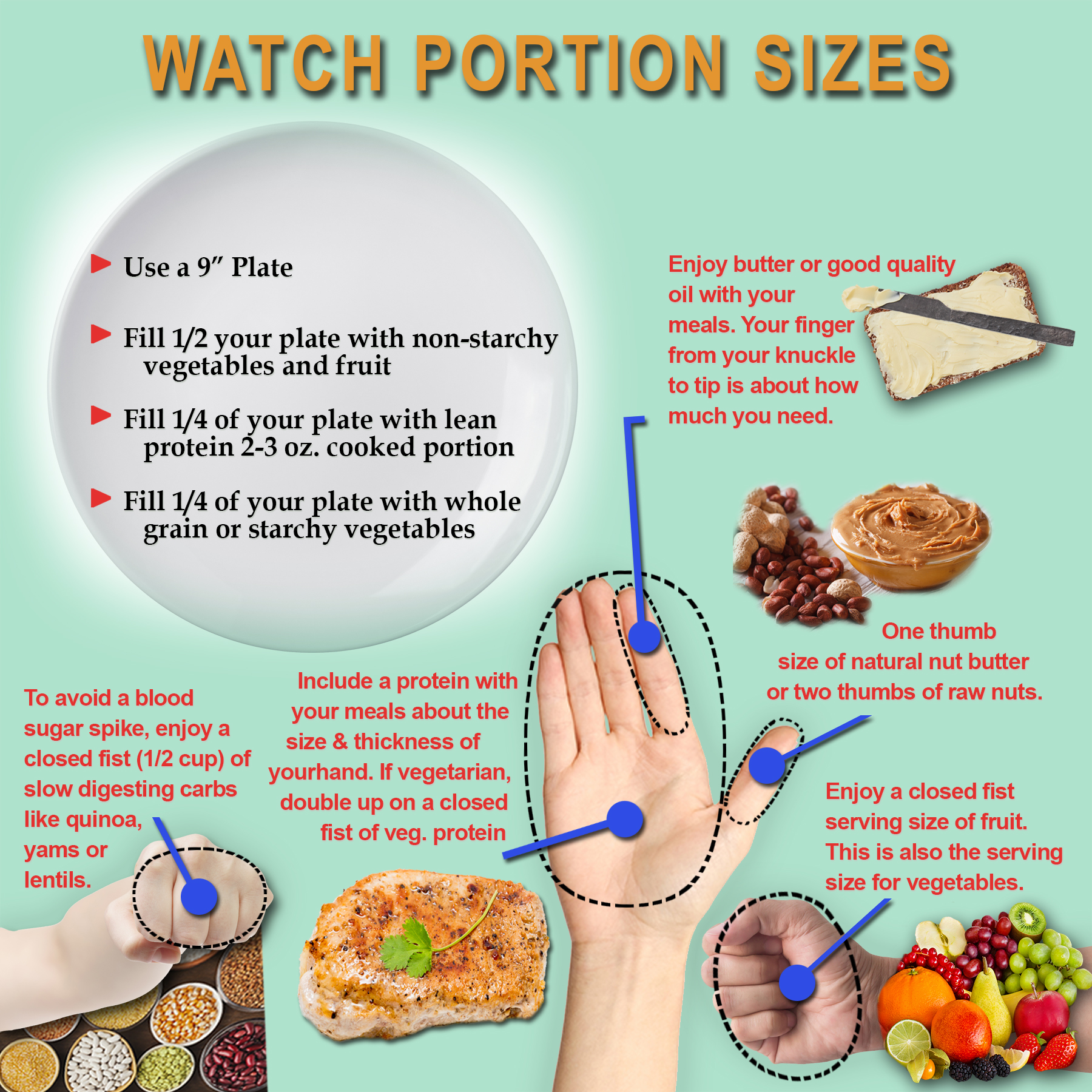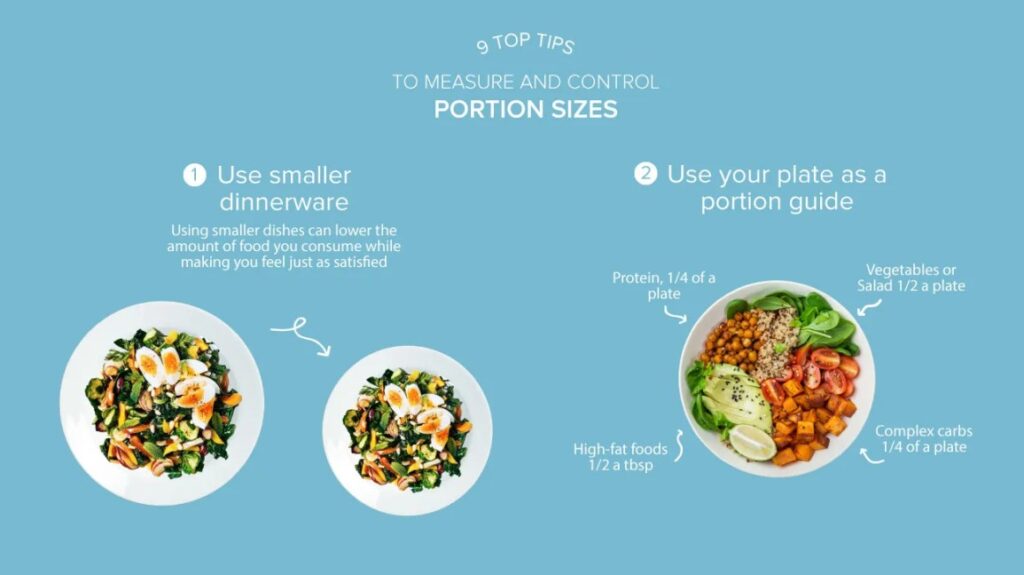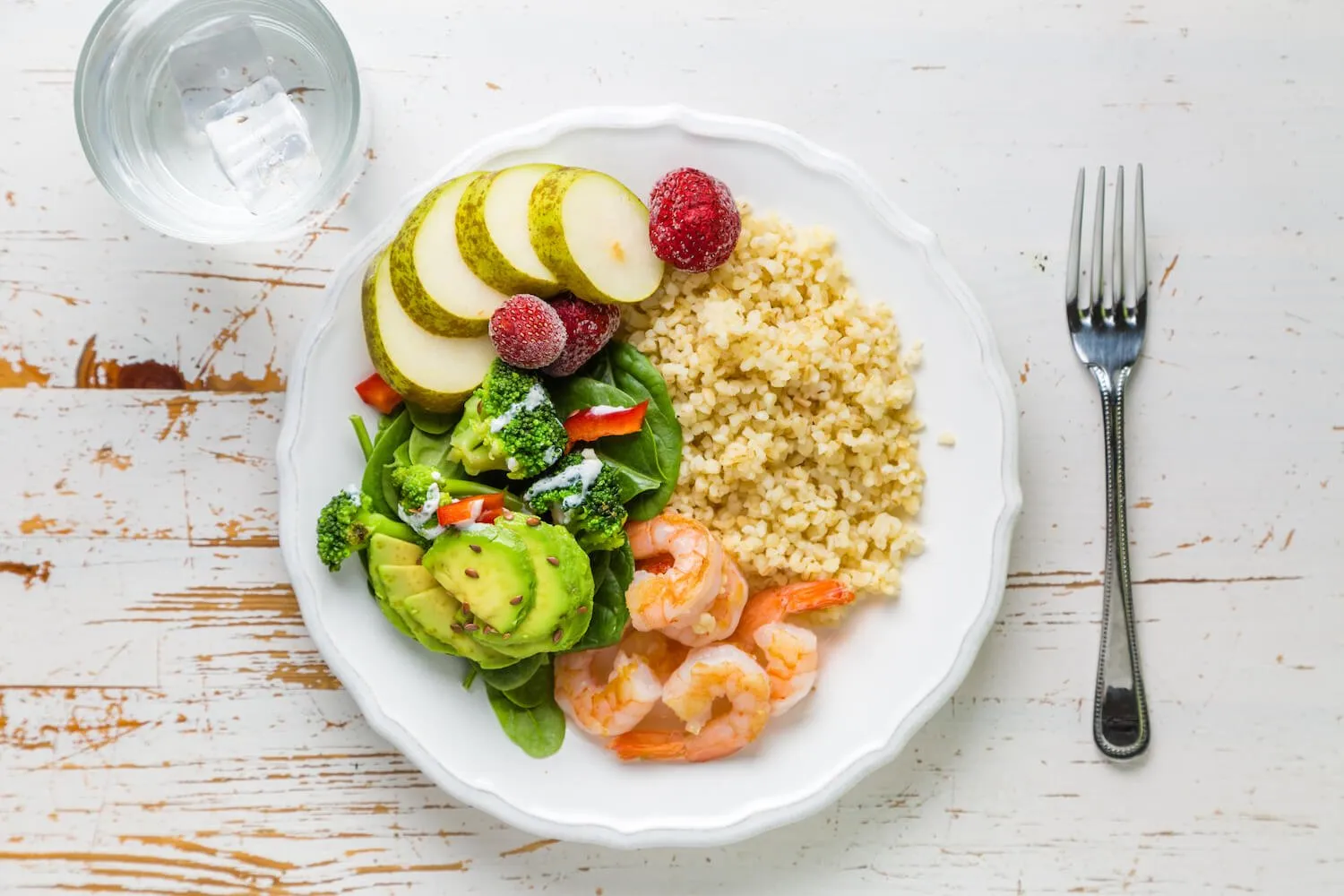
The Importance of Portion Control in Healthy Eating
In this article, we’ll be discussing the importance of portion control in healthy eating. You’ll learn about the practical approach of portion control and how it focuses on food portion sizes. The USDA provides guidelines for portion sizes of different food groups, and practicing portion control can help you get the right amount of nutrients without overeating or restricting. We’ll also explore how controlling portions can aid in weight loss and improve overall health. Additionally, we’ll address the difference between portion sizes and serving sizes, which can be challenging to distinguish. Finally, we’ll mention tools like portion control plates and containers that can assist you in managing your portions effectively.
Table of Contents
ToggleThe Importance of Portion Control in Healthy Eating
Portion control is a practical approach to eating that focuses on food portion sizes. It is a key component of maintaining a healthy weight and improving overall health. By practicing portion control, you can ensure that you are getting the nutrients you need without overeating or restricting yourself.
Definition of Portion Control
Portion control refers to the practice of managing and regulating the amount of food you consume in one sitting. It involves being mindful of the serving sizes recommended for different food groups and making conscious decisions about the quantity of food you eat.
Practical Approach to Eating
Portion control is a practical approach to eating because it does not involve any strict dieting or eliminating certain foods from your diet. Instead, it focuses on moderation and balance. By controlling your portion sizes, you can enjoy a variety of foods while still maintaining a healthy weight and getting the necessary nutrients your body needs.
Maintaining a Healthy Weight
One of the main benefits of practicing portion control is its ability to help you maintain a healthy weight. When you consume larger portions than your body needs, the excess calories can lead to weight gain over time. By controlling your portion sizes, you can prevent overeating and ensure that you are consuming the right amount of calories for your body.
Improving Overall Health
In addition to weight management, portion control also has numerous benefits for your overall health. By practicing portion control, you can reduce the risk of developing chronic diseases such as heart disease, diabetes, and high blood pressure. It can also help improve digestion and prevent digestive issues such as bloating and indigestion.
USDA Guidelines
The United States Department of Agriculture (USDA) provides general guidelines for portion sizes of different food groups. These guidelines can serve as a useful reference when practicing portion control. For example, the USDA recommends that a serving of grains should be about the size of your fist and a serving of meat or poultry should be about the size of the palm of your hand.
Different Food Groups
When practicing portion control, it is important to consider the different food groups and their recommended serving sizes. A balanced meal should include a variety of food groups in appropriate portions. For example, half of your plate should be filled with fruits and vegetables, a quarter should be filled with whole grains, and the remaining quarter should be filled with lean protein.
Understanding Portion Sizes
It is important to understand the difference between portion sizes and serving sizes. Portion sizes refer to the amount of food you choose to put on your plate or eat at one time. Serving sizes, on the other hand, are standard measurements that are used to provide consistent nutritional information.
Recognizing the Difference
Recognizing the difference between portion sizes and serving sizes can be challenging, especially when eating out or consuming pre-packaged foods. Portion sizes can vary widely and may not always align with the recommended serving sizes. It is important to be mindful of portion sizes and make adjustments as needed to ensure that you are consuming appropriate amounts of food.
Overeating vs. Restricting
One of the challenges in practicing portion control is finding the balance between overeating and restricting yourself. It is important to listen to your body’s hunger and fullness cues and eat until you are satisfied, but not overly full. Restricting yourself too much can lead to feelings of deprivation and may make it challenging to maintain a healthy eating pattern.
Mindful Eating
Mindful eating is another important aspect of portion control. It involves paying attention to the taste, texture, and satisfaction of the food you are eating. By eating mindfully, you can better gauge your hunger and fullness levels and make conscious decisions about your portion sizes.
Portion Control Plates
There are tools available to help with portion control, such as portion control plates. These plates have designated sections for different food groups, making it easier to visualize and control your portion sizes. Using a portion control plate can help you create balanced meals and ensure that you are getting the right amount of each food group.
Portion Control Containers
Another tool that can aid in portion control is portion control containers. These containers are pre-measured and labeled with the recommended portion sizes for different food groups. They can be used to pack your meals and snacks, making it convenient to control your portion sizes even when you are on the go.
Weight Loss
One of the benefits of practicing portion control is its potential for weight loss. By controlling your portion sizes, you can create a calorie deficit, which is necessary for weight loss. However, it is important to combine portion control with a balanced, nutritious diet and regular physical activity for optimal weight loss results.
Nutritional Balance
Practicing portion control also helps you maintain a nutritional balance in your diet. By controlling your portion sizes, you can ensure that you are getting the right balance of carbohydrates, proteins, and fats, as well as essential vitamins and minerals. This is important for overall health and wellbeing.
Measuring Food
One way to practice portion control is by measuring your food. You can use measuring cups, spoons, and kitchen scales to accurately measure your portion sizes. This can be especially helpful when cooking at home or when consuming foods that require portion control, such as grains, oils, and snacks.
Eating Mindfully
Another important aspect of portion control is eating mindfully. This involves being fully present while eating, paying attention to the taste, texture, and satisfaction of the food. By eating mindfully, you can better gauge your hunger and fullness levels and make conscious decisions about your portion sizes.
Portion Control Equals Restriction
One common myth about portion control is that it equals restriction. However, portion control is not about depriving yourself of certain foods or limiting your food intake to an extreme extent. It is about finding balance and moderation in your eating habits. By practicing portion control, you can enjoy a wide variety of foods while still maintaining a healthy weight and getting the nutrients your body needs.
Lack of Satisfaction
Another myth about portion control is that it leads to a lack of satisfaction. However, by eating mindfully and paying attention to the taste and satisfaction of the food, you can find satisfaction in smaller portion sizes. It is not about eating less, but about being more aware of your body’s needs and making conscious decisions about your portion sizes.
In conclusion, portion control is a practical approach to eating that focuses on food portion sizes. By practicing portion control, you can maintain a healthy weight, improve overall health, and ensure a nutritional balance in your diet. It is important to understand the difference between portion sizes and serving sizes, as well as to be mindful of your hunger and fullness cues. Tools such as portion control plates and containers can be helpful in controlling your portion sizes. Remember, portion control is not about restriction, but about finding balance and moderation in your eating habits.
Discover the importance of portion control in healthy eating. Learn how to manage portion sizes, maintain a healthy weight, and improve overall health. Find out the difference between portion sizes and serving sizes. Explore tools like portion control plates and containers for effective portion management.





